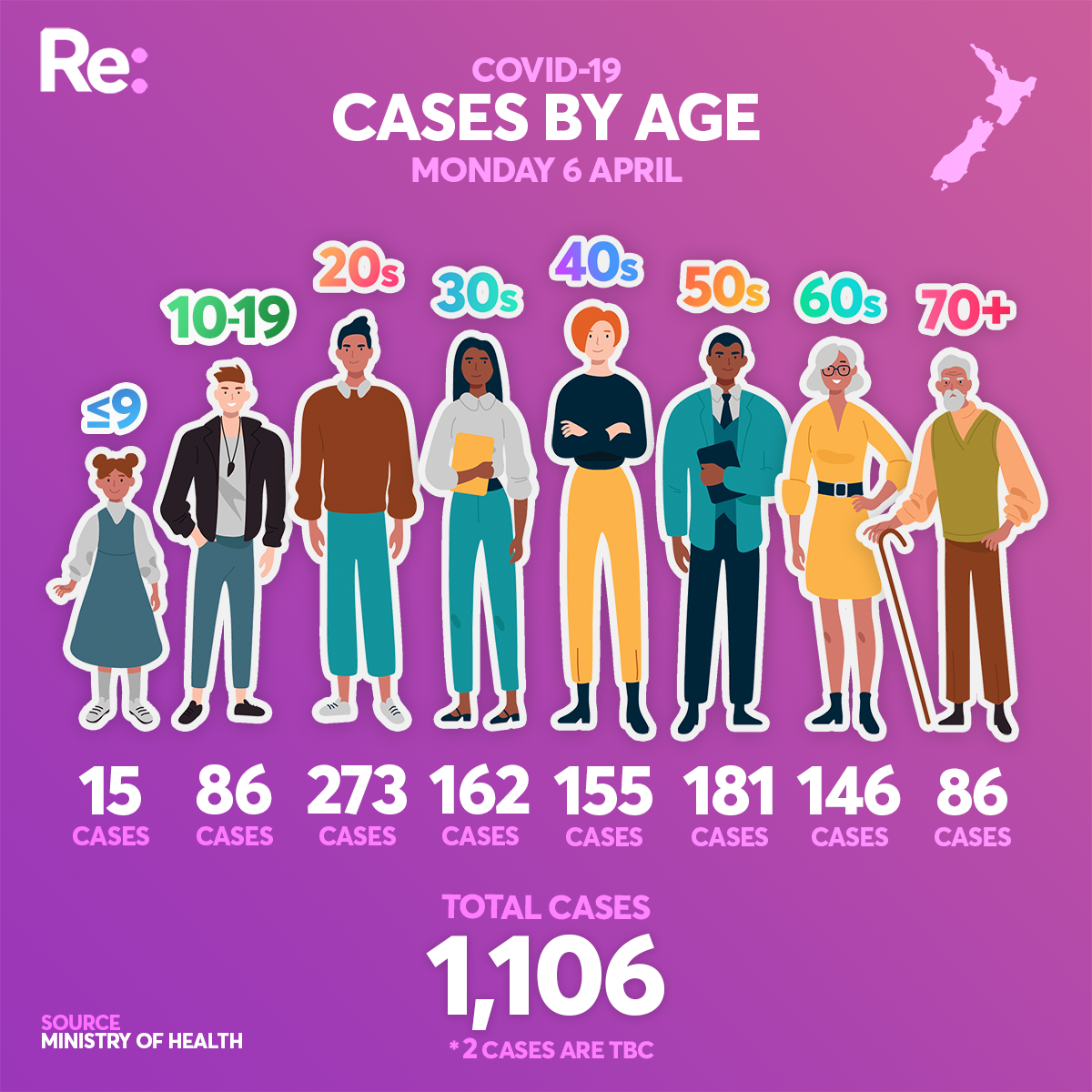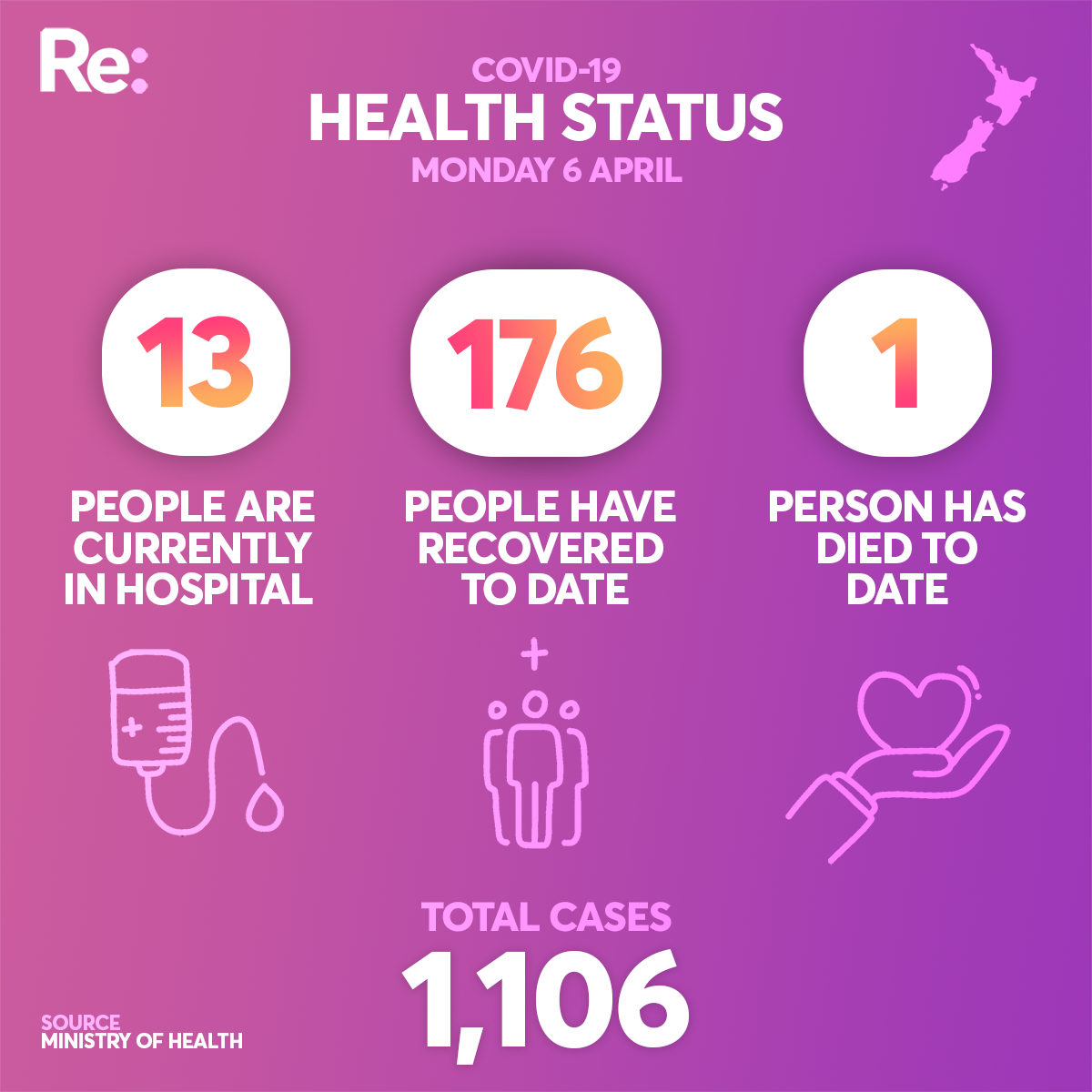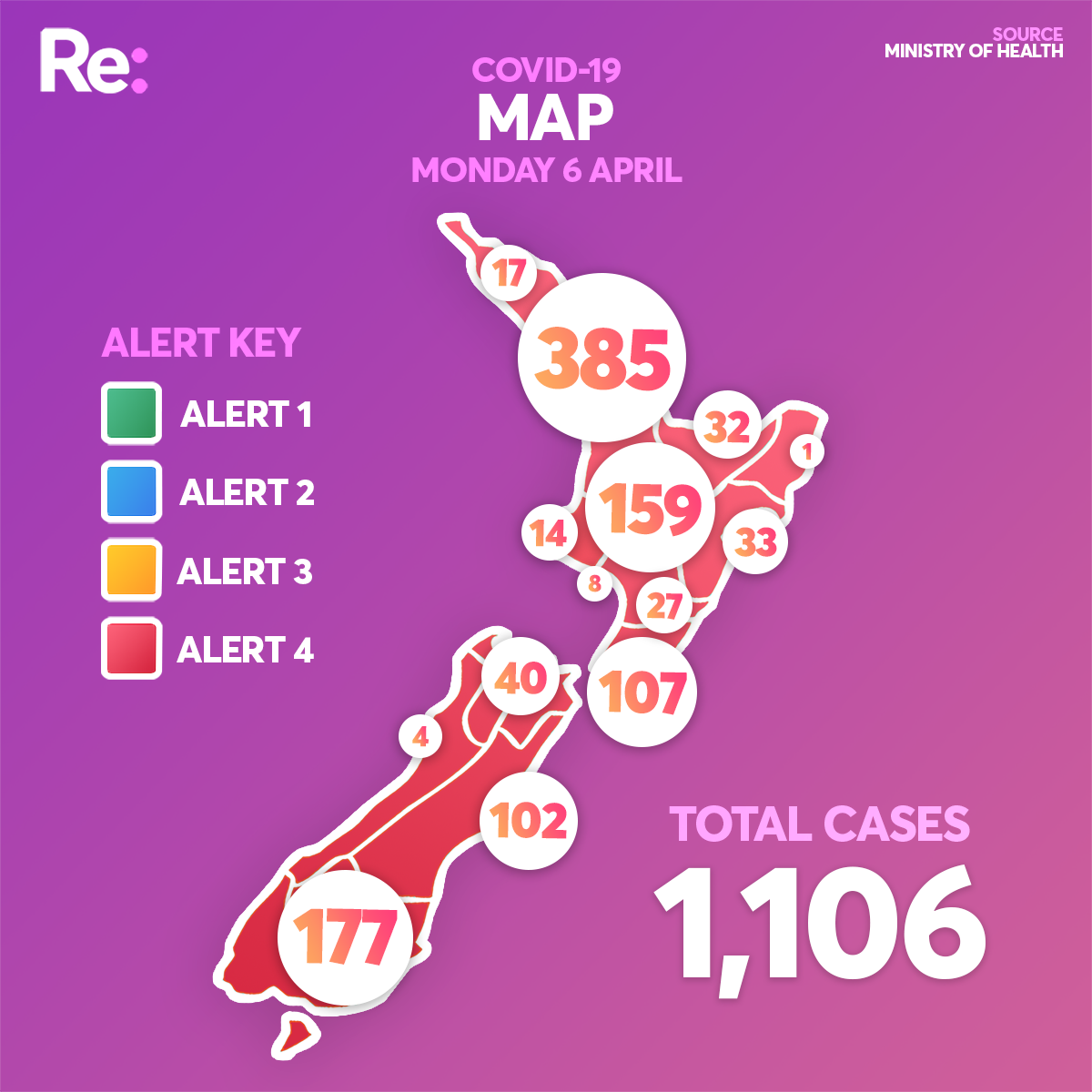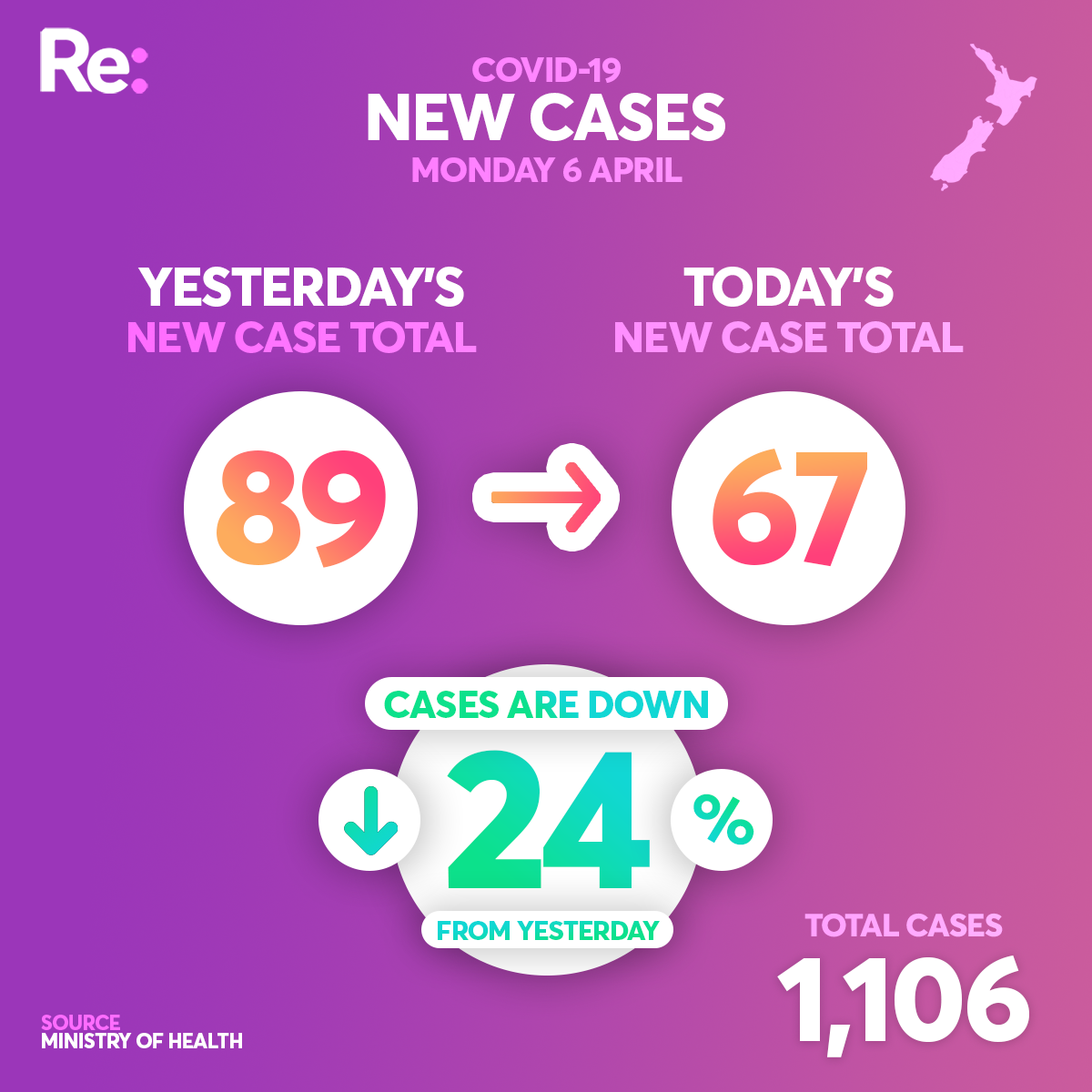Check in here for the key, verified facts on how New Zealand is dealing with the Covid-19 pandemic. We update this several times a day.
1:00pm, Friday 10 April - Day 16 of lockdown
New Zealand has experienced its second death from Covid-19, a woman in her 90s at Burwood Hospital in Christchurch.
She was part of a group of 20 residents transferred from Rosewood Rest Home to Burwood Hospital as part of a cluster management process by the Canterbury DHB.
No family members were able to be present when she passed away, but hospital staff were with her.
Our first death was on March 29, a woman in her 70s with underlying health conditions.
“This sad news reinforces the importance of our move to Alert Level 4 and the measures we are all taking to limit spread, break the chain of transmission and prevent deaths,” says Director of Public Health Dr Caroline McElnay.
Today our number of recovered cases is again higher than our number of new cases.
There are 44 new cases. That brings our total to 1283 cases.
56 people have recovered today, bringing the total number of recovered cases to 373.
16 people are in hospital, with four of those in intensive care units, two in a critical condition.
- 40% of the cases are linked to overseas travel
- 44% are close contacts of someone else with Covid-19
- 2% are community transmission
- 14% are still under investigation but it’s likely many will be community transmission.
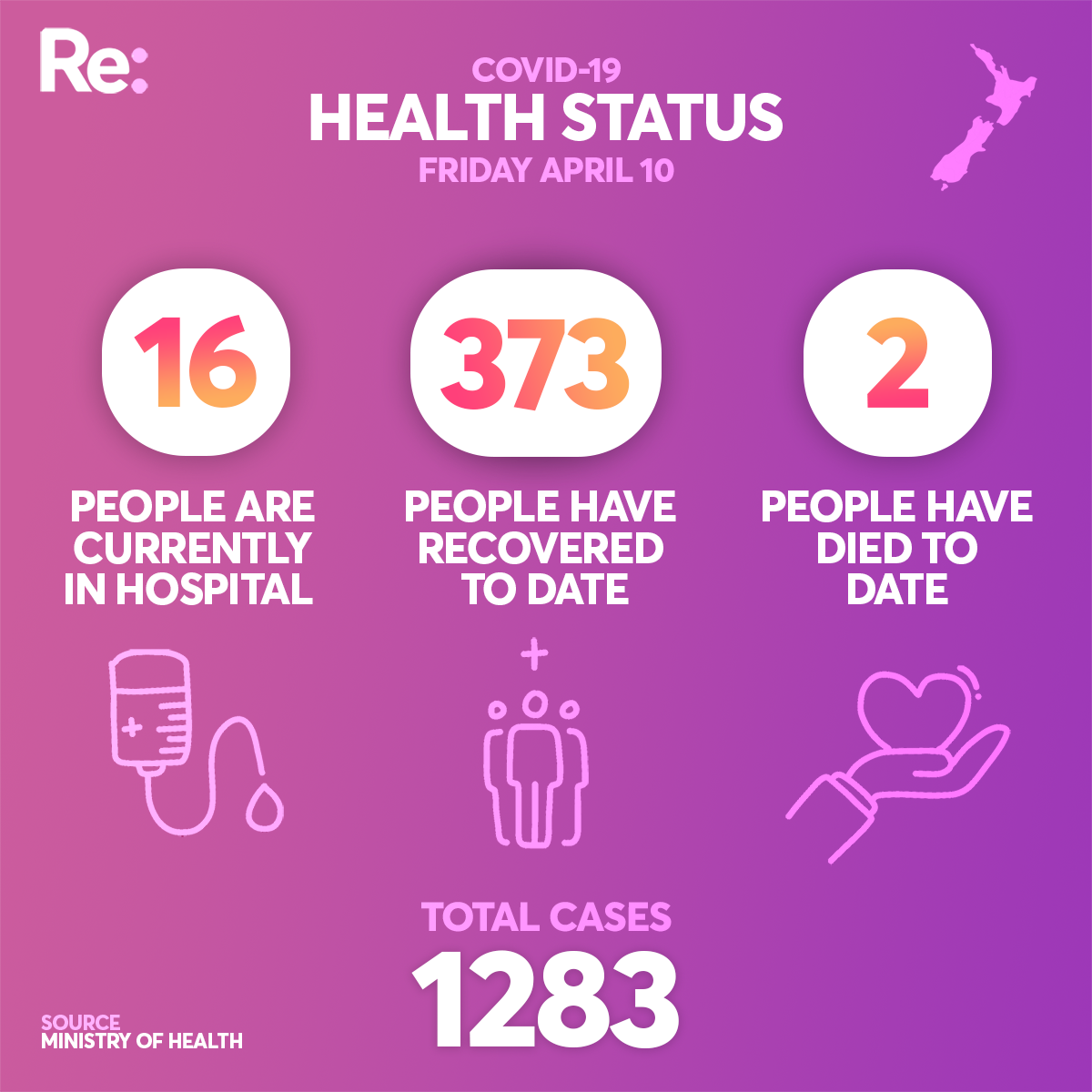
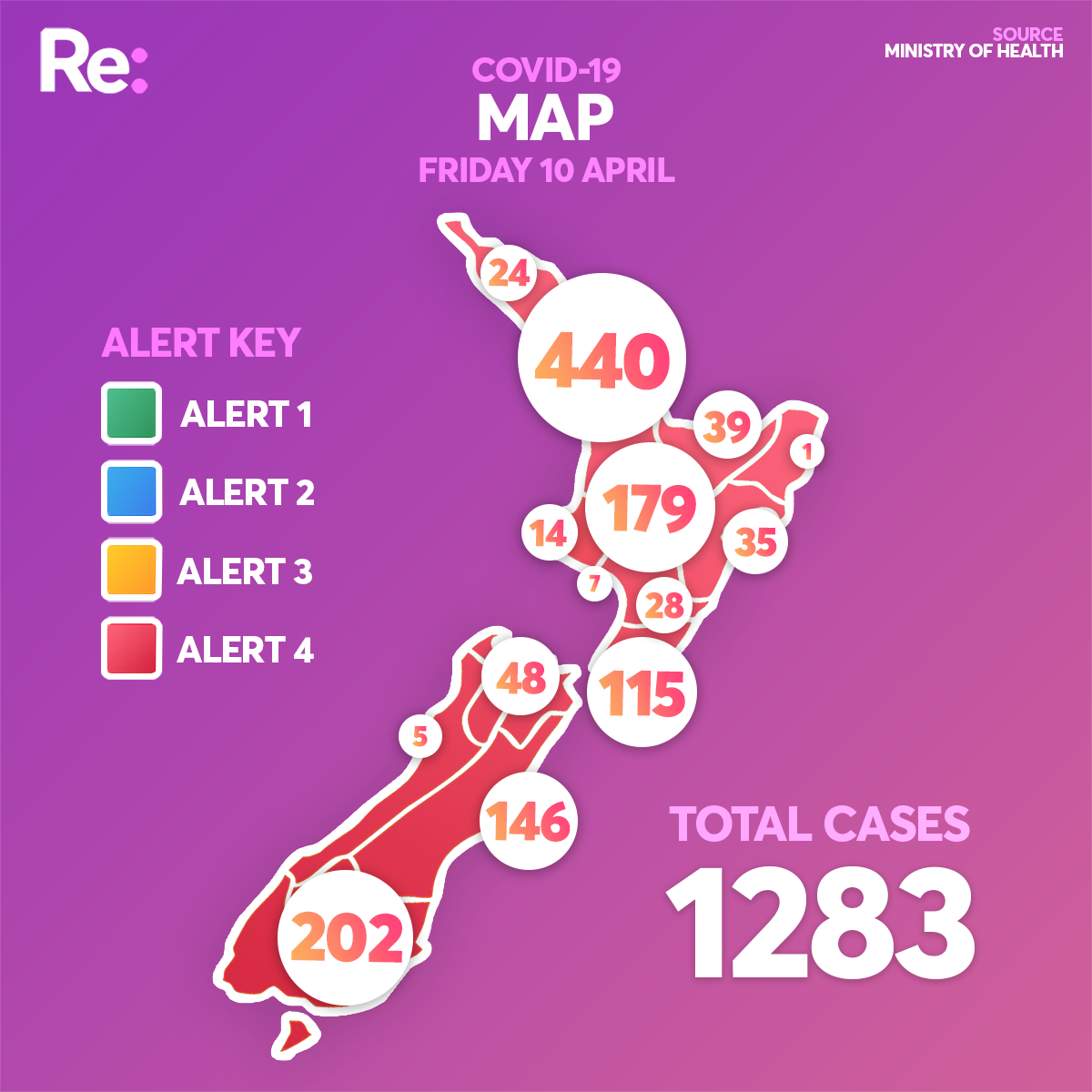
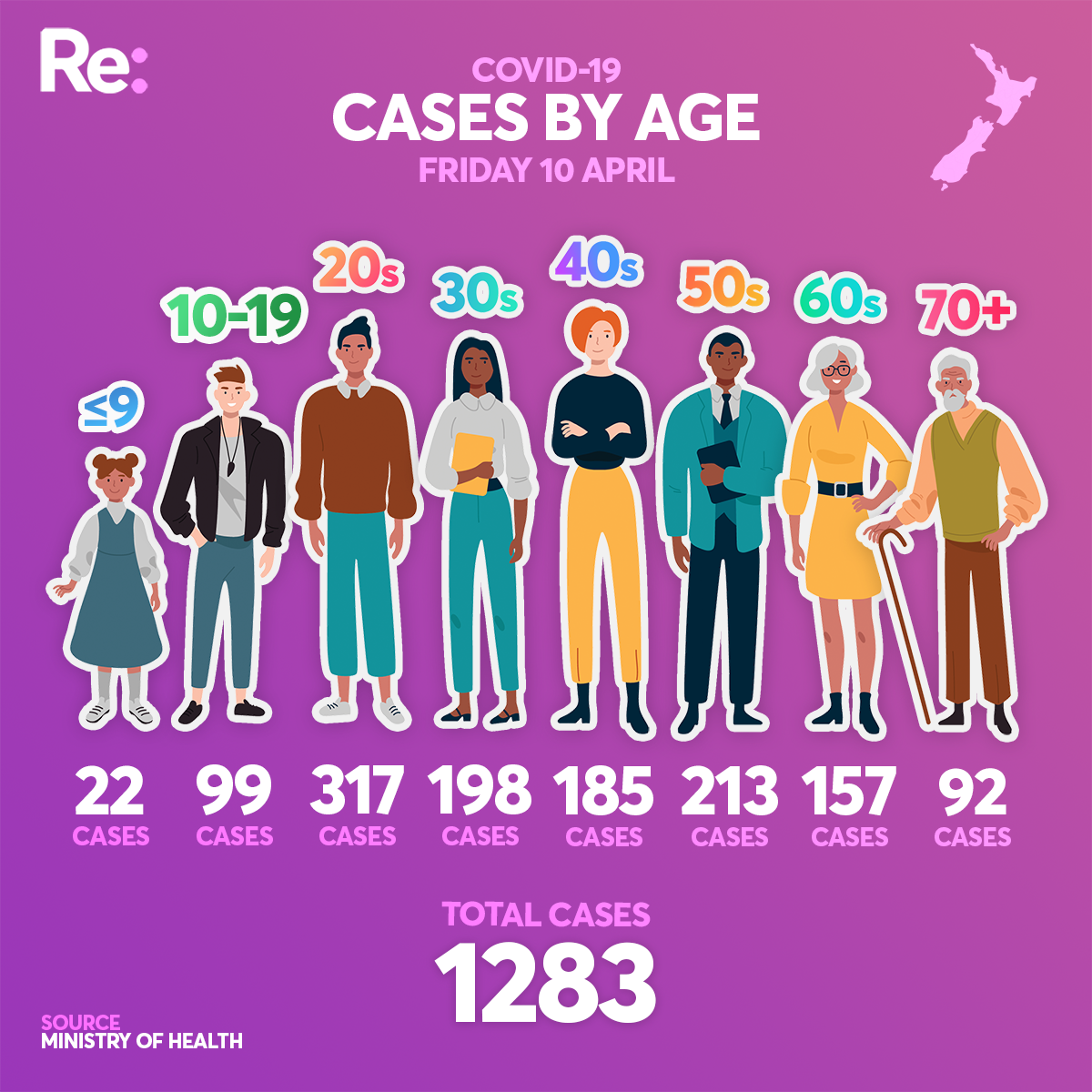
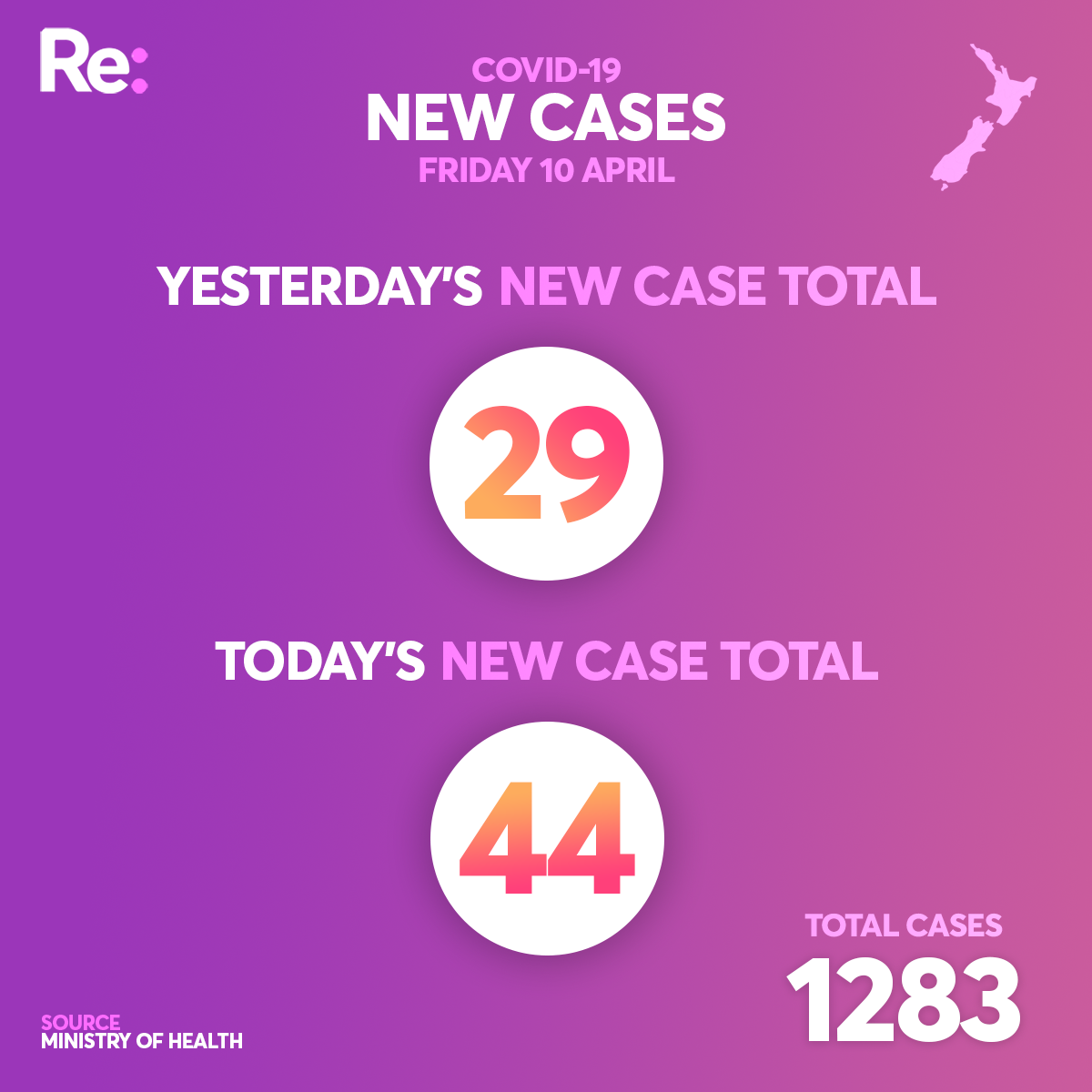
2:00pm, Thursday 9 April
Here are today's updates in infographics:
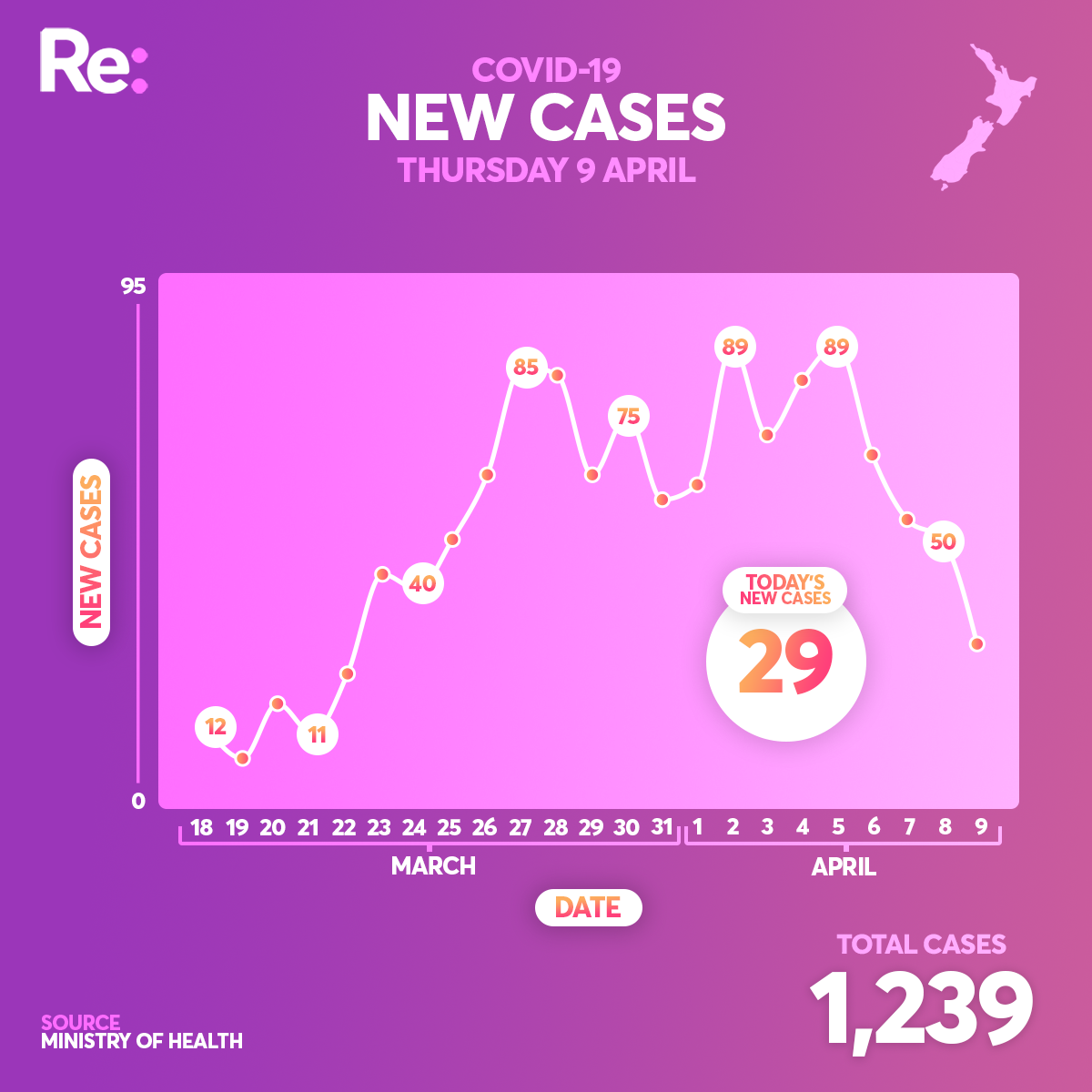
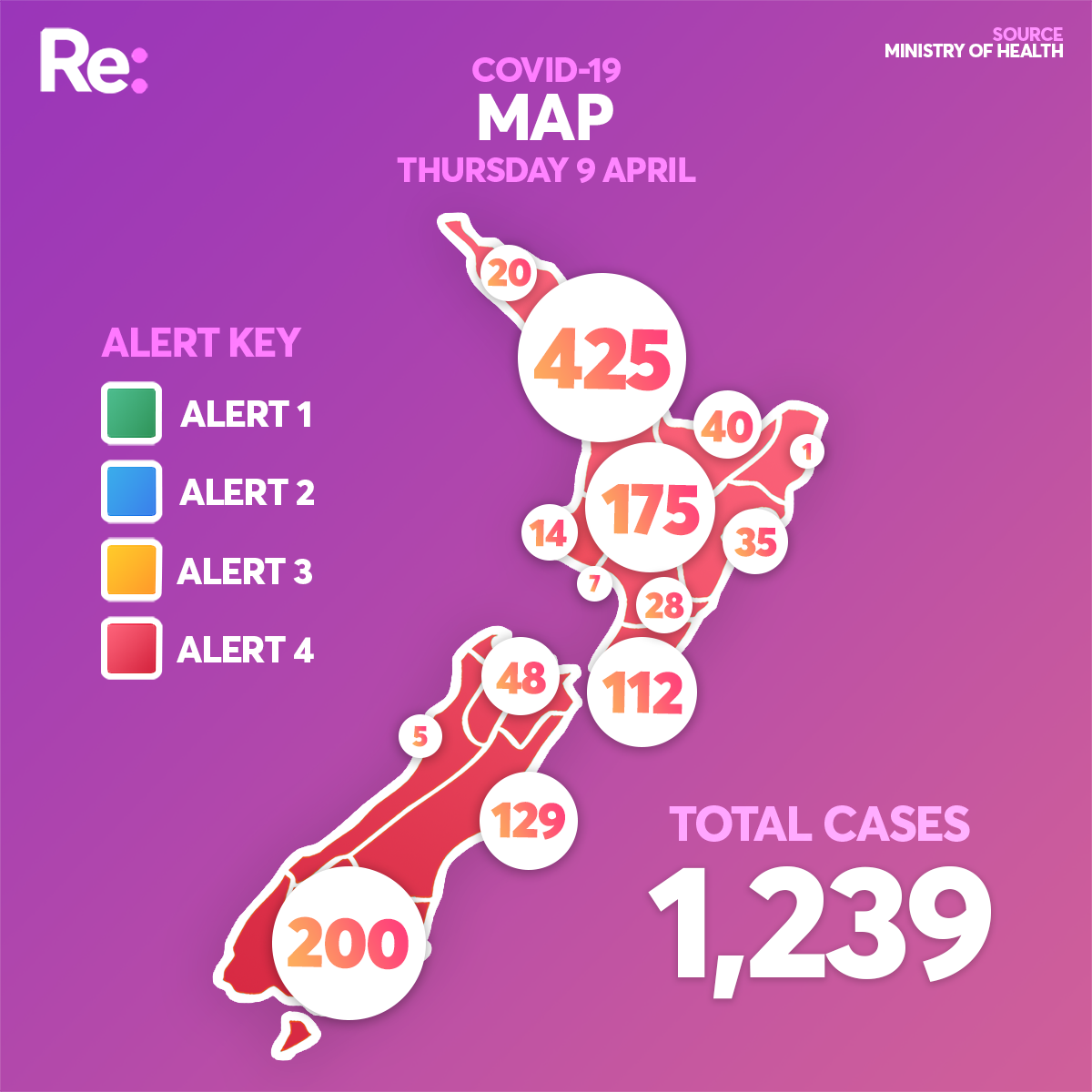
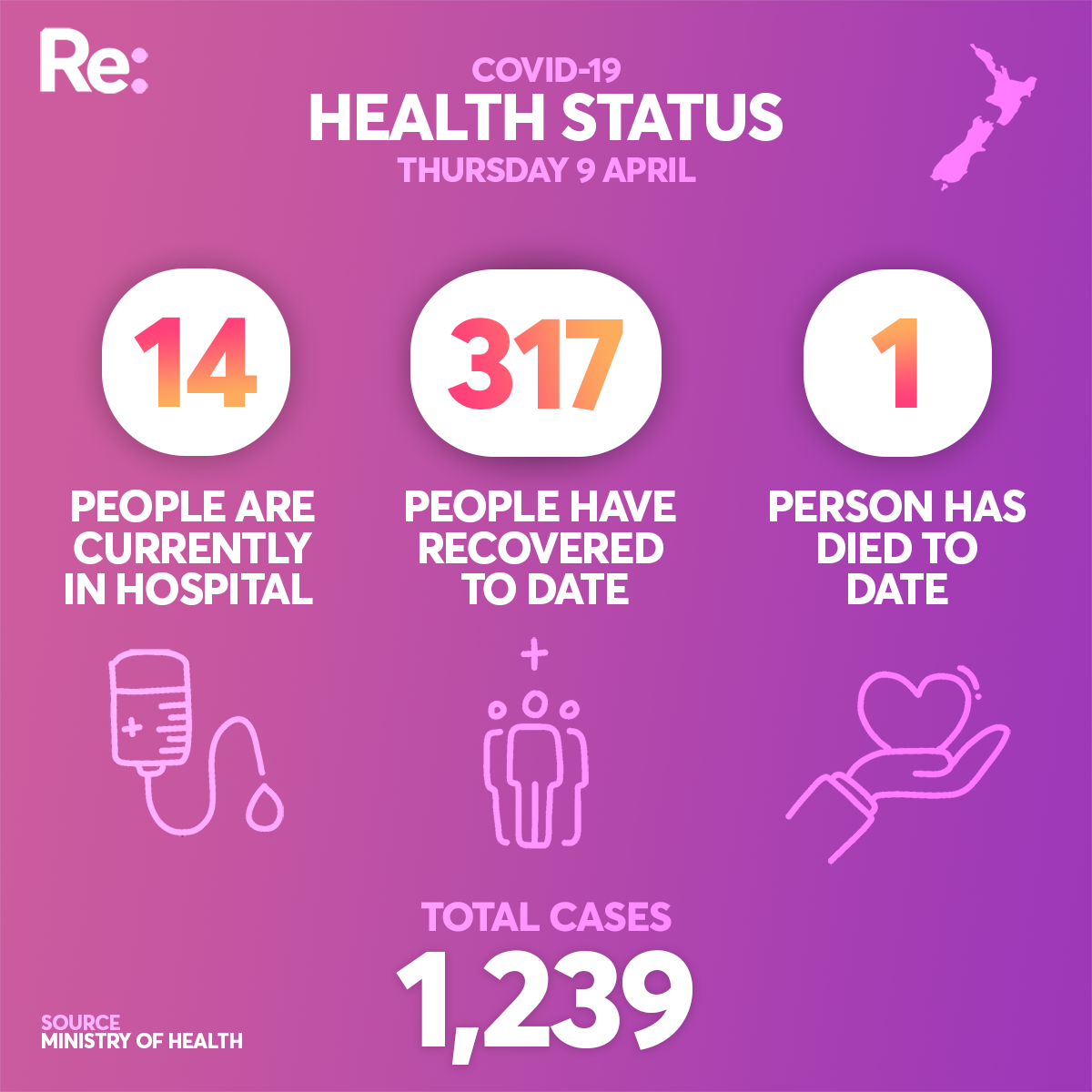
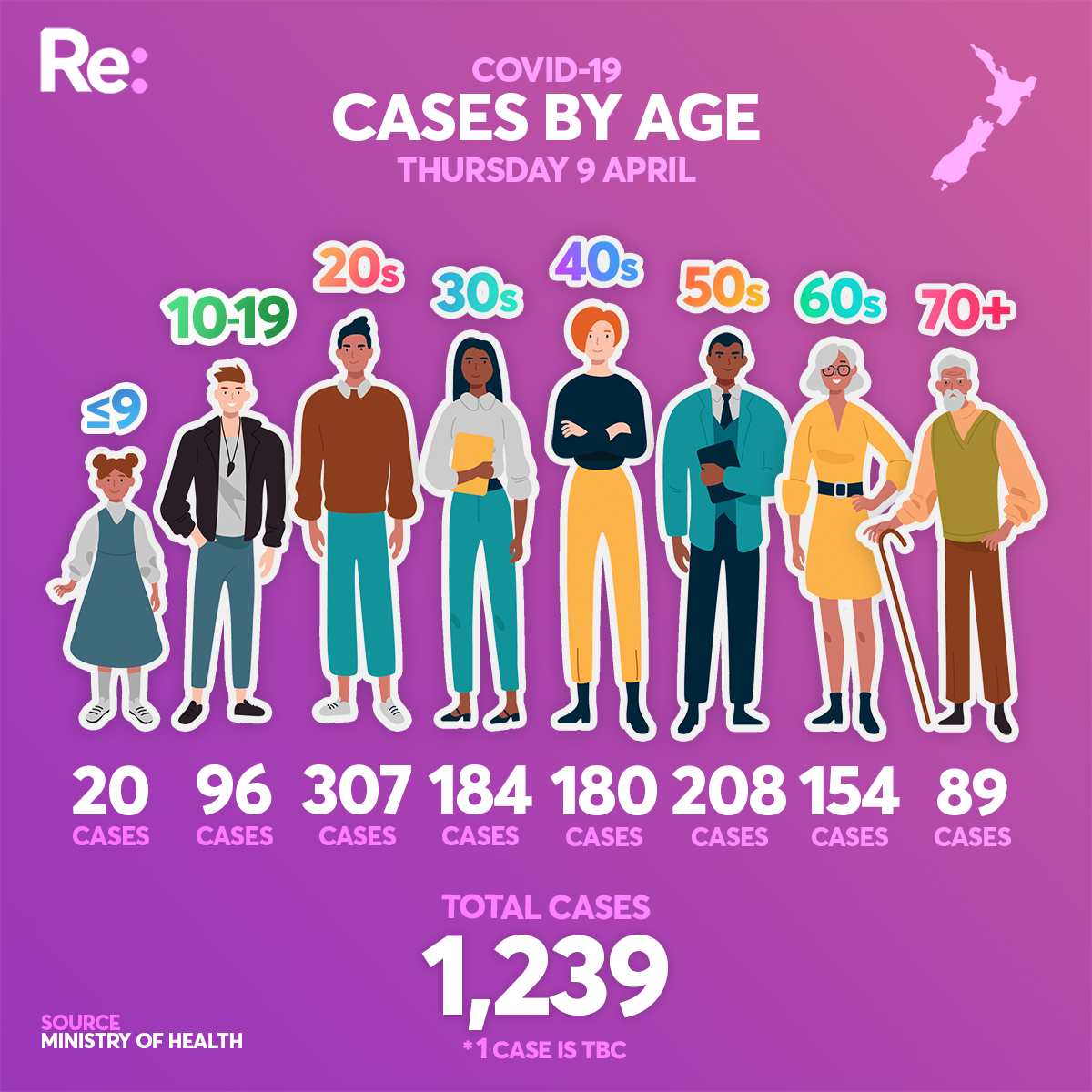
1:00pm, Thursday 9 April
Today our number of recovered cases is higher than our number of new cases.
There are 29 new cases, and no additional deaths. That brings our total to 1239 cases.
35 people have recovered today, bringing the total number of recovered cases to 317.
14 people are in hospital, with four of those in intensive care units.
- 41% of the cases are linked to overseas travel
- 44% are close contacts of someone else with Covid-19
- 2% are community transmission
- 13% are still under investigation but it’s likely many will be community transmission.
There were 3990 tests done yesterday.
“I have no hesitation in saying that what New Zealanders have done over the last two weeks is huge,” says Prime Minister Jacinda Ardern. “In the face of the greatest threat to human health in over a century, Kiwis have quietly and collectively implemented a nationwide wall of defence.”
Modelling showed New Zealand was on a similar trajectory to Italy or Spain - and that the 205 cases we had two weeks ago on March 25 could have grown to over 10,000 by now without lockdown.
“Instead of the horrific scenes we have seen abroad, the total number of cases has fallen for the last four days, and we have the lowest daily number of cases since before the lockdown began.”
“You have saved lives.”
However, success doesn’t mean we change what we’re doing. “Removing restrictions now would allow the virus to spread rapidly once again and we would be back to the starting line within two weeks.”
So the government has announced new scaled-up health measures:
- From midnight tonight, everybody who arrives into New Zealand must be quarantined in a government-approved quarantine hotel for 14 days, even if they have no symptoms.
- Increased and faster contact tracing, including a locally-developed app and looking to the Singaporean Government’s app
Many people, including the National Party, have been calling for mandatory quarantine for all arrivals into New Zealand. The Prime Minister says it could not have been done earlier as the number of arrivals was too large to safely house. Nearly 40,000 New Zealanders have returned home since the border was closed on March 20, which is more than all of the hotel rooms across the country that could have been used. “We could not have done it from the beginning but we can and are doing it now,” says the Prime Minister.
The notice of whether we will move out of Alert Level 4 will not come any earlier than two days before lockdown is due to finish. If we do move to Alert Level 3, this means businesses will only have two days to make arrangements to safely open.
2:10pm, Wednesday 8 April
Two television channels broadcasting education content will be among the new measures for home learning when school term two begins next Wednesday.
Term two begins on next Wednesday, April 15th. The Education Minister Chris Hipkins has announced four channels of support for home learning:
- Increasing the number of students who have internet and devices at home
- Hard copy packs of educational material
- Two television channels to be broadcasting education-related content, one in English and one in Māori
- More resources available for parents
“The aim is for all families to have access to at least one learning channel from home from next Wednesday,” says Minister Hipkins.
This is in addition to measures that individual schools are taking.
Around half of schools are “very well set up for distance learning using the internet” but there are around 80,000 households with children without access to the internet.
Devices and hard-copy materials will not all be delivered by the first day of term, but will arrive “in waves”, Minister Hipkins says. “We’re not going to be able to have all of that resolved on day one.”
The government has spent $88.7 million funding for these initiatives.
The Education Minister says he himself knows “being at home with your kids all day, every day and not being able to go anywhere can be incredibly challenging.”
The government is also preparing for when lockdown ends. “When Level 4 ends, people should not assume that schools and early childhood centres would automatically open on day one,” says Minister Hipkins.
2:00pm, Wednesday 8 April
Here are today's updates in infographics:
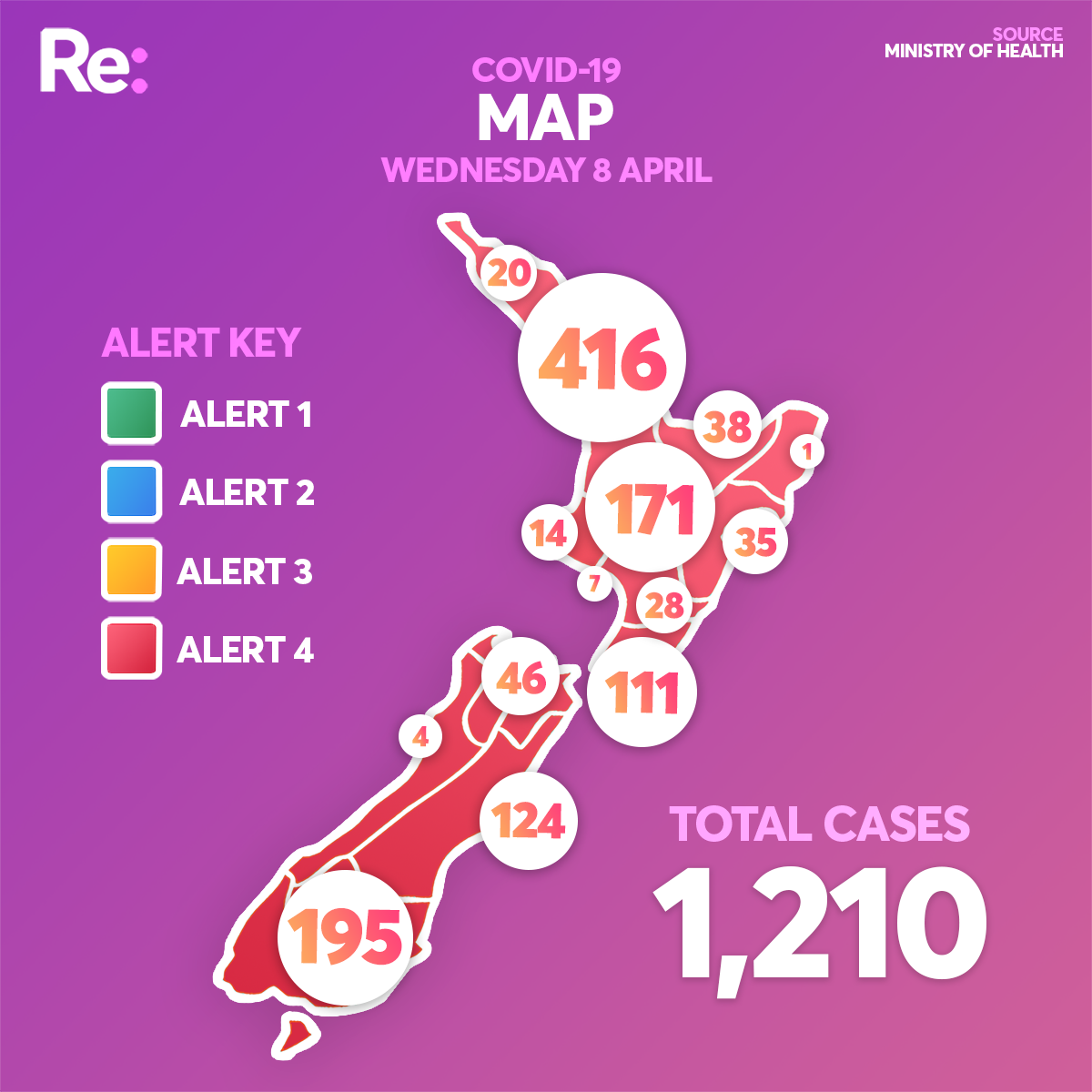
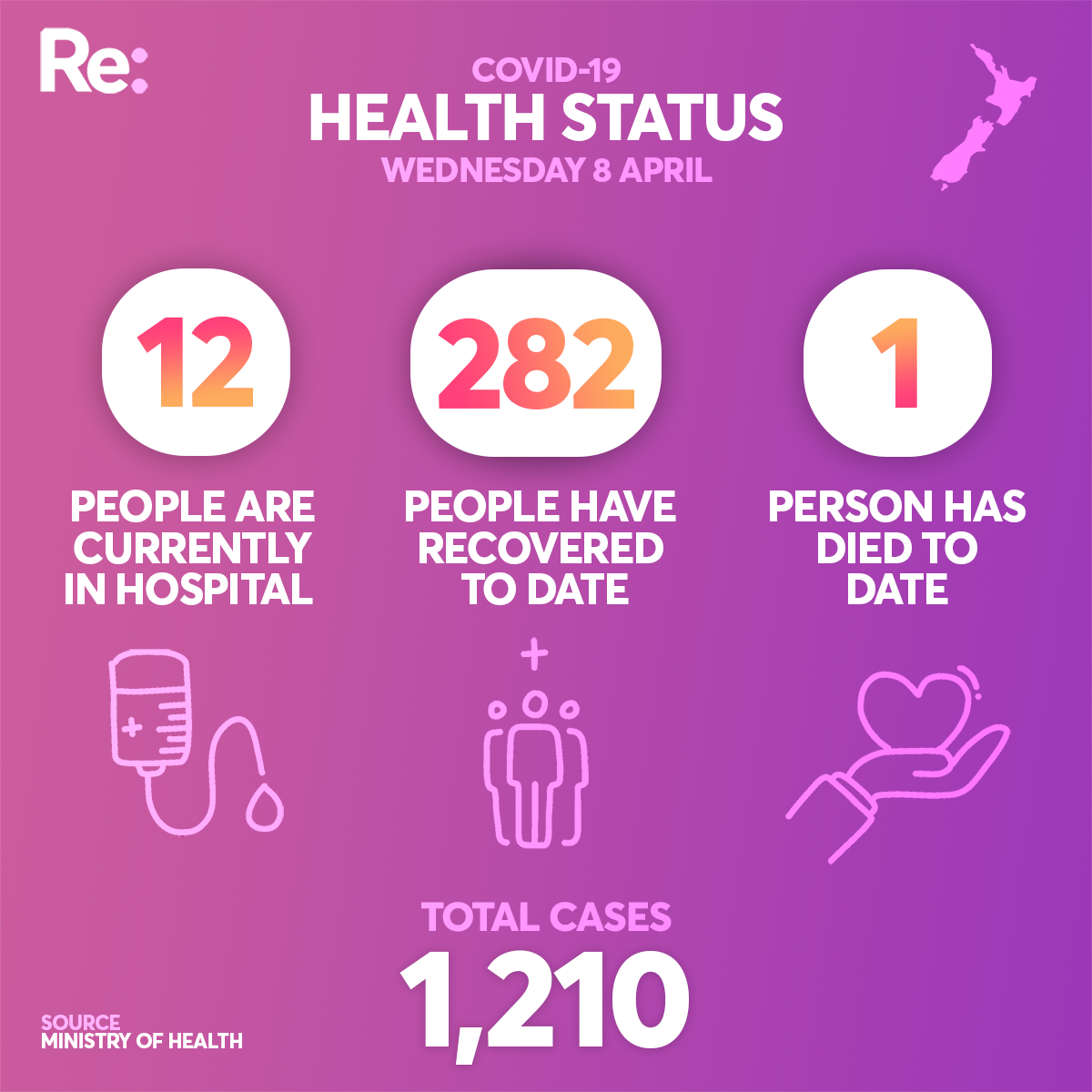

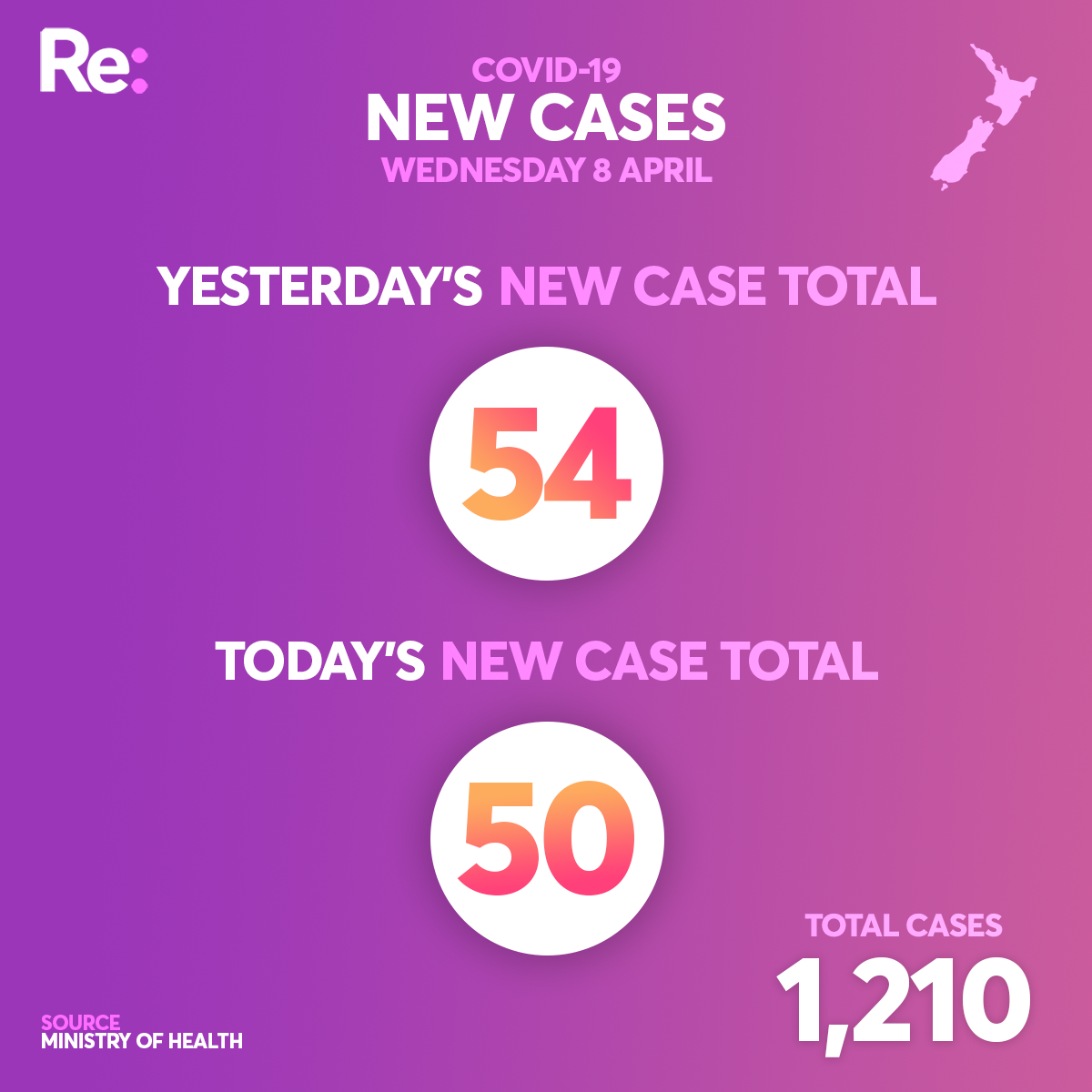
1:00pm, Wednesday 8 April
Today there are 50 new cases, and no additional deaths. This is the lowest number of new cases in two weeks. The Prime Minister says she “remains cautiously optimistic that we are starting to turn a corner.”
That brings our total to 1210 cases.
282 people have recovered.
12 people are in hospital, with four of those in intensive care units, two in a critical condition.
- 41% of the cases are linked to overseas travel
- 43% are close contacts of someone else with Covid-19
- 2% are community transmission
The rest (14%) are still under investigation but it’s likely many will be community transmission.
There are an average of 3343 tests being done a day. The total number of tests is now 46,875.
There were 4098 tests done yesterday - the highest-ever number of tests done in one day.
54 healthcare workers have Covid-19. Director-General of Health Dr Ashley Bloomfield says a quarter of the cases were contracted from overseas travel, and the rest are from existing contacts, and some are potentially from their workplaces. They are:
- 20 health support and care workers
- 17 nurses
- 7 health admin workers
- 7 doctors
- 3 medical students
New Zealand workers are taking up roles in the fruit and vege growing industry.
Overseas workers traditionally fill many roles in our fruit and vege sector, but border control has meant no new overseas workers can enter the country for the harvest season.
Around 200 New Zealand workers from other industries have been placed into jobs in apple and pear harvesting. The Prime Minister says last year the harvest workforce was around 90% overseas workers, and this year it has dropped to around 50% overseas workers.
As Cyclone Harold hits Vanuatu and Fiji, New Zealand has sent a defence force plane for surveillance of damage. Another defence force plane is ready to provide essential supplies.
The Prime Minister has reminded the country that Alert Level 4 remains in place over all of Easter weekend. This means churches must remain closed. “I know that will be an enormous disappointment to many New Zealanders of faith,” says the Prime Minister. She asks religious leaders to make sure their congregations don’t meet in person, and use online tools to connect instead.
1:00pm, Tuesday 7 April
Today there are 54 new cases, and no additional deaths.
That brings our total to 1160 cases.
241 people have recovered.
12 people are in hospital, with four of those in intensive care units, one in a critical condition.
- 42% of the cases are linked to overseas travel
- 41% are close contacts of someone else with Covid-19
- 2% are community transmission
The rest are still under investigation but it’s likely many will be community transmission.
There are an average of 3063 tests being done a day. The total number of tests is now 42,826.
The World Health Organisation has updated its guidelines on the use of masks. It does not recommend the use of medical masks by the general public, except for these two conditions:
- If someone is sick, they can wear a mask to help stop them spreading the virus
- If someone is caring for a sick person, they can wear a mask to help protect themselves from the virus
The Prime Minister has explained her reasons for not sacking the Health Minister David Clark for his breaches of the lockdown rules. In two separate instances, the Health Minister broke his own government’s lockdown rules in order to exercise outside of his local area - once mountain biking and once travelling 20km to a beach with his family.
Prime Minister Jacinda Ardern says he “made a massive mistake” but sacking him would cause too much disruption to the health system during the Covid-19 pandemic.
It would have been a challenge to bring someone else up to speed on his role, the Prime Minister says, including the knowledge of the pandemic and its impact on the country, the prior knowledge of our health system and its issues, and the knowledge and relationships with DHB leaders and staff.
“I was not willing to sacrifice the time that would be required to bring someone up to speed when we are in the middle of a global pandemic. That would not have been the right decision for New Zealand.”
“He needs to pay the price, but the price cannot be paid through our response to this global pandemic. We have a job to do and I'm determined that we need to get on with it. We have to put New Zealand first.”
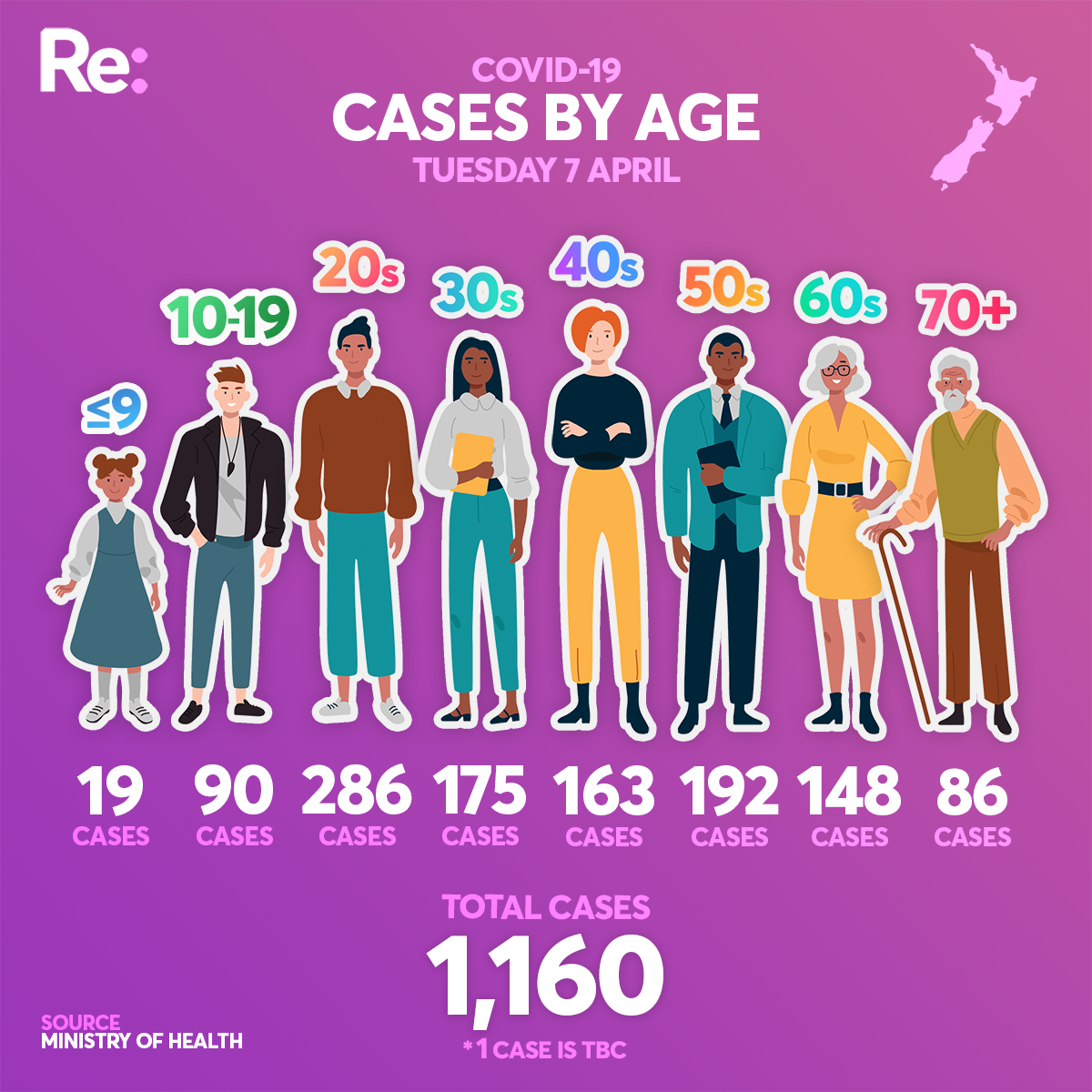
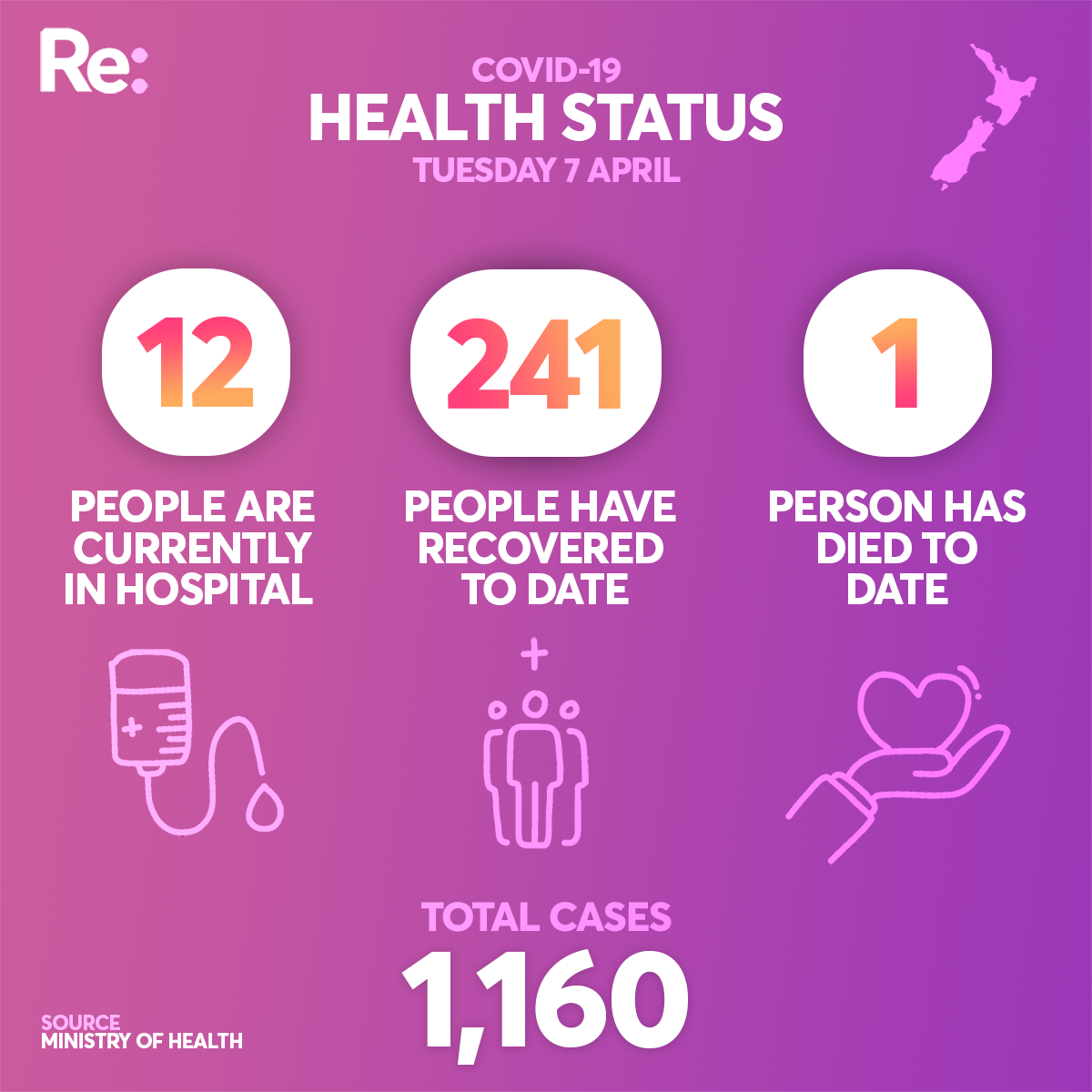
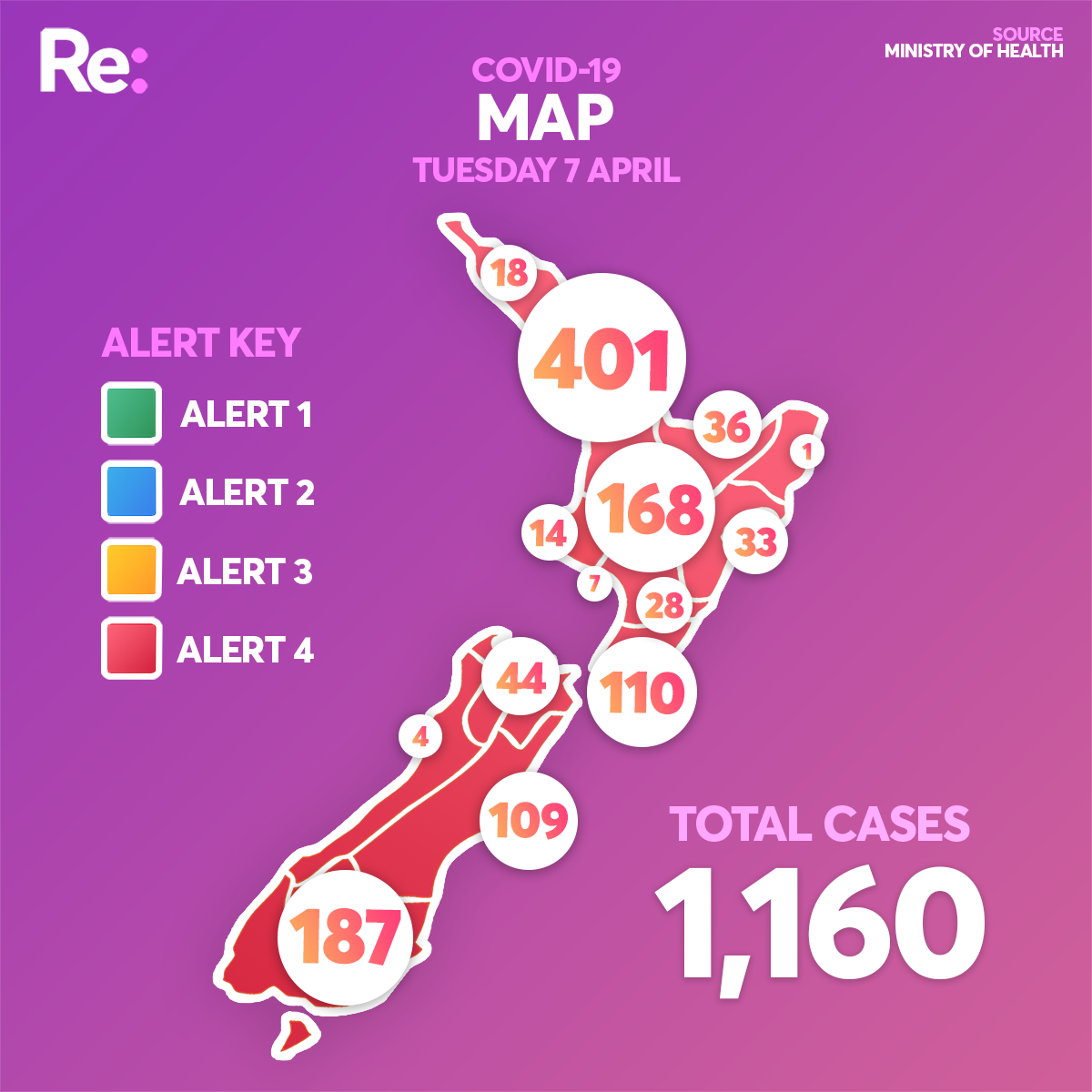
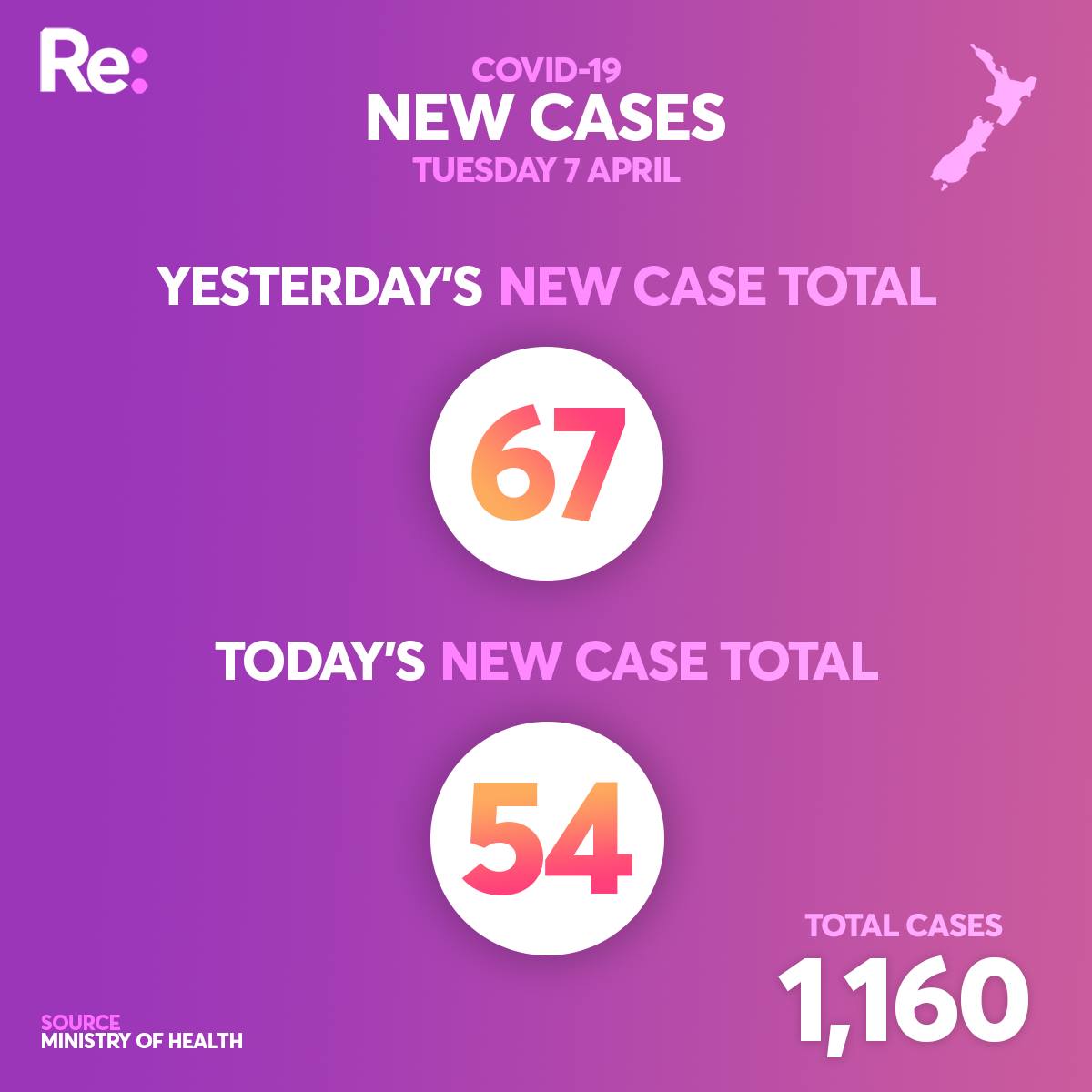
9:00am, Tuesday 7 April
The new register that shows which employers have been paid the Covid-19 wage subsidy has been launched. You can seach the public database here. Yesterday Prime Minister Jacinda Ardern said it would allow workers to check whether their employers had applied for money on their behalf - allowing them to ensure that they money is passed on.
The Health Minister David Clark has offered to resign after admitting to breaching his own government’s lockdown rules. He went for a mountain bike ride and drove his family 20km to the beach. The Prime Minister said she would sack him under normal conditions, but due to the disruption it would cause to the health sector during the Covid-19 pandemic, would keep him in the role. He has been demoted to the bottom of Cabinet and had his role of Associate Finance Minister taken off him.
4:00pm, Monday 6 April
$5.3 billion has been paid out so far as part of the wage subsidy scheme to 876,000 people.
The Prime Minister says compared to other countries’ wage subsidy schemes that haven’t started paying out yet, “this is an incredible number in terms of money we've got out the door in just a few weeks.” It’s expected the scheme will pay out between $8 billion - $12 billion.
A public searchable database of employers who have received the wage subsidy will launch soon, so anyone, including employees, can see which businesses have received the subsidy.
The government will soon launch a mental health campaign to support New Zealanders through the stresses of the Covid-19 lockdown and its aftermath. “No one should be too hard on themselves in this time,” says the Prime Minister.
The Prime Minister has confirmed we will not leave Alert Level 4 any earlier than four weeks from when it began. “I don't want New Zealand to be at Level 4 a minute longer than needed, but there is no plan to move from Level 4 early,” she says.
334 New Zealanders have been returned to the country on “mercy flights” arranged by MFAT. This is in addition to the many New Zealanders who returned on commercial flights.
And in some good news, the last patients from December’s Whakaari volcanic eruption have now been discharged from the national burns centre at Middlemore Hospital.
1:00pm, Monday 6 April
Today there are 67 new cases, and no additional deaths.
That brings our total to 1106 cases.
176 people have recovered.
13 people are in hospital, with two of those in stable conditions, and one in a critical condition in intensive care.
- 43% of the cases are linked to overseas travel
- 38% are close contacts of someone else with Covid-19
- 2% are community transmission
The rest are still under investigation but it’s likely many will be community transmission.
There are an average of 2846 tests being done a day. The total number of tests is now just under 40,000.
The ethnicity breakdown of cases is:
- 73% European
- 8.4% Asian
- 7.8% Māori
- 3.4% Pacific
The three largest clusters continue to grow. They are from a wedding in Bluff (62 cases), an event at a Matamata bar (58 cases), and at Marist College in Auckland (72 cases).
There’s a new cluster in Christchurch associated with the Rosewood Rest Home, with 15 cases. 20 residents will be moved to Burwood Hospital to be cared for by DHB staff.
The director-general of health Dr Ashley Bloomfield says some people are still confused around the terms self-isolation, quarantine and the bubble. He’s clarified:
- Quarantine: is when someone comes back to New Zealand from overseas and has symptoms. They are required to go to a quarantine hotel in Auckland, where they’re tested and cared for, and remain in that hotel for the full 14 days.
- Self isolation: is for close contacts of an existing or probable case. People who need to be in self-isolation need to stay in their own home, isolating themselves from other people in their home.
- The bubble: is what everyone else should be doing - staying in our houses, and only having close contact with those inside our house.
So while it’s funny to call ourselves “in quarantine” on our Insta posts, unless we’re in that quarantine hotel, that’s not technically what we’re doing.
People who need medical care for other conditions are being urged to still seek treatment. “Please do not stop seeking care that you might need”, says Dr Bloomfield.
If you’re unwell with non-Covid related illness, you should ring Healthline or your GP first - many GPs can give online or phone consultations, and some can safely come to your house.
If you are very unwell with significant chest pains, call 111 and get an ambulance.
